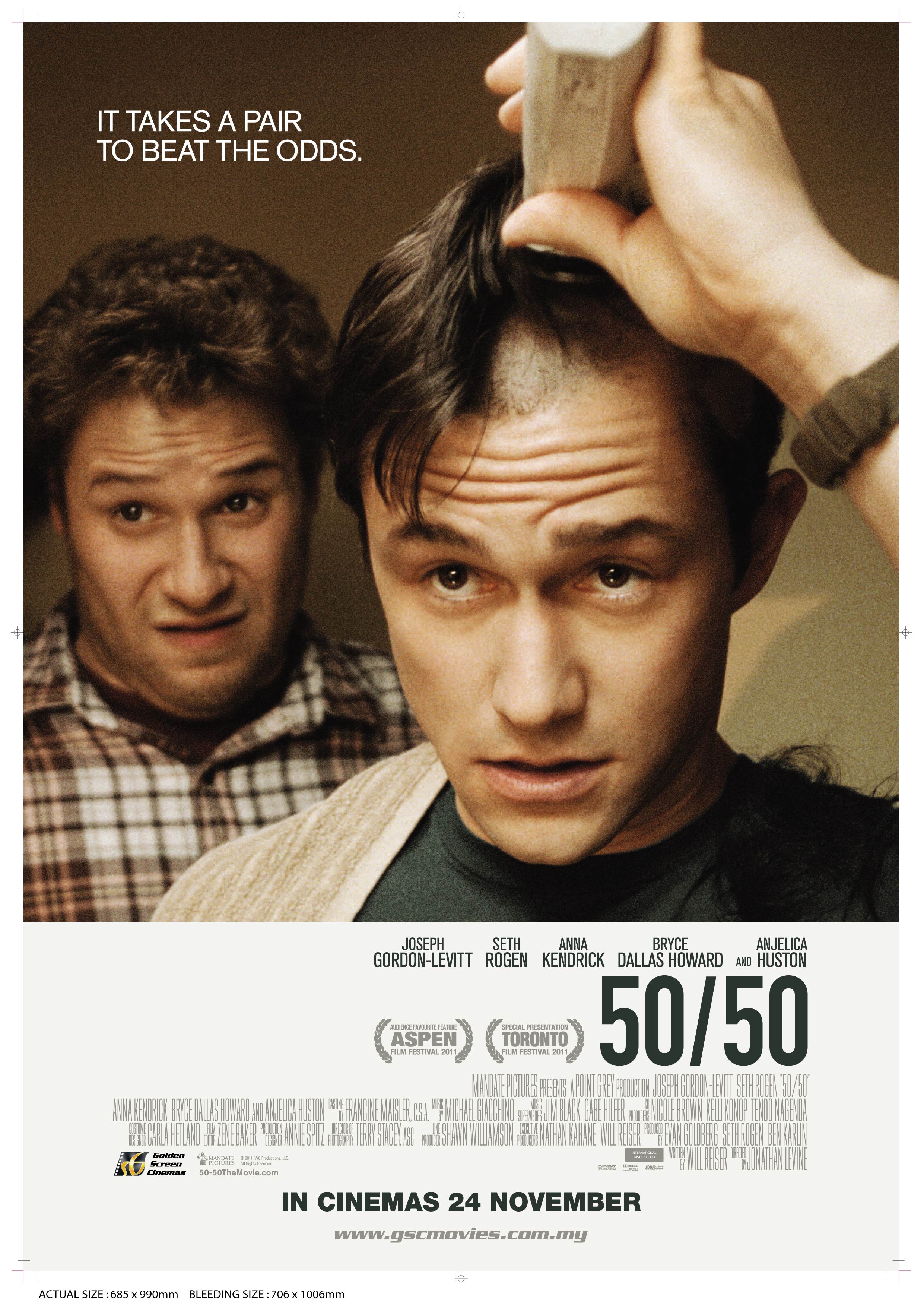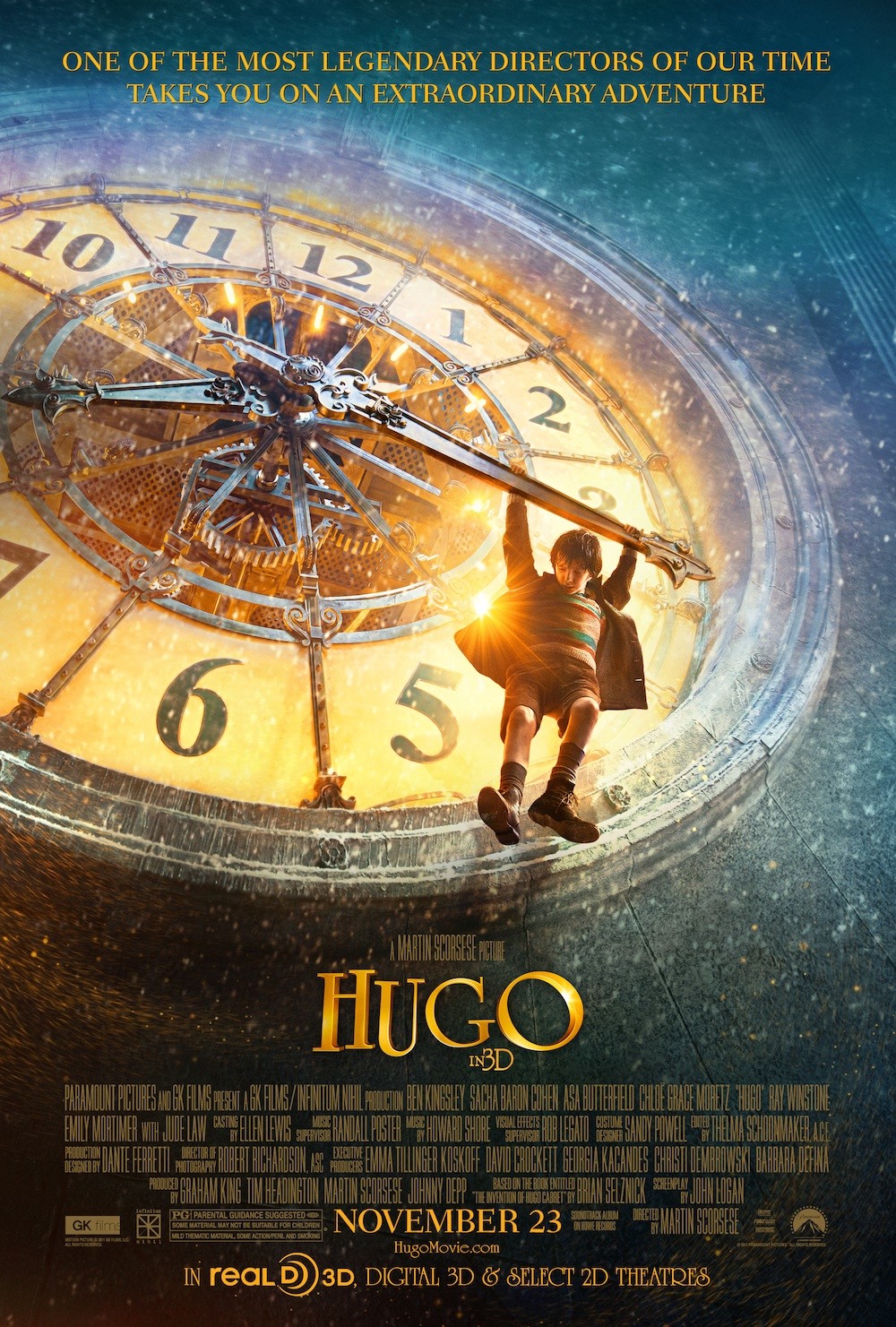Joseph Gordon-Levitt plays Adam and Seth Rogen is his best friend Kyle. Adam and Kyle are the central pair of a perfect cast of characters played by Anna Kendrick, Bryce Dallas Howard, Matt Frewer, Philip Baker Hall, and Anjelica Huston. Adam works for Seattle Public Radio with Kyle, spends time with his artist girlfriend Rachael, and doesn’t call his mother as much as he should. He has an average, good life. But after a back ache sends him to the doctor, Adam is told he has a rare form of cancer.
The story of 50/50 is the semi-autobiographical work of Will Reiser, a friend of Seth Rogen’s, who wrote the screenplay as a part of the healing process. The film is as honest and personal as Little Miss Sunshine and Juno, both of which were written by unknowns and went on to score Oscars for Best Original Screenplay and nominations for Best Picture. Particularly now that there can be up to ten Best Picture nominees it is not out of line to suggest 50/50 will appear in both categories. Following other terrific performances in Mysterious Skin, Brick, The Lookout, and Inception, Joseph Gordon-Levitt has proven again that he is a future A-list actor.
No matter what awards 50/50 does or does not get, it is a true, honest, entertaining film. Often screenplays forget to keep the focus on the main character and the resulting films are unfocused and sloppy. Although there are half a dozen good characters played by great actors there are no dragging moments where a subplot is given too much screen time or a supporting character is made more important than Adam.
The balance between characters is true for the various supporting parts as well. Adam’s crumbling relationship with Rachael is balanced against his long-lasting friendship with Kyle, his new experiences with his therapist, his distant relationship with his parents, and his budding friendships with fellow cancer-patients Mitch and Alan. Each relationship changes with Adam as he shaves his head, starts chemotherapy, and attempts to understand his new situation.
Despite all of the drama and tragedy associated with cancer, 50/50 remains one of the funniest films of the year. This is a film that uses the intimacy and awkwardness of its subject matter to draw laughter from its audience. The most appropriate comparison would be to Garden State or Almost Famous, which both accomplished a similar melancholy comedy.
Taking the comparison further, 50/50 manages, like Almost Famous, to have a great soundtrack with an appropriate mix of Radiohead, Pearl Jam, The Bee Gees, The Jacuzzi Boys, and others. Director Jonathan Levine sometimes uses a song to comment on a particular moment of the movie, but often the music is just a great choice for the background to a scene without dialogue.
The Verdict: It may be rated 14A for profanity, sexual content, and drug use, but 50/50 is a film that can be enjoyed by anyone who doesn’t wall themselves off to mature content. It is modern, relatable, and very human.





